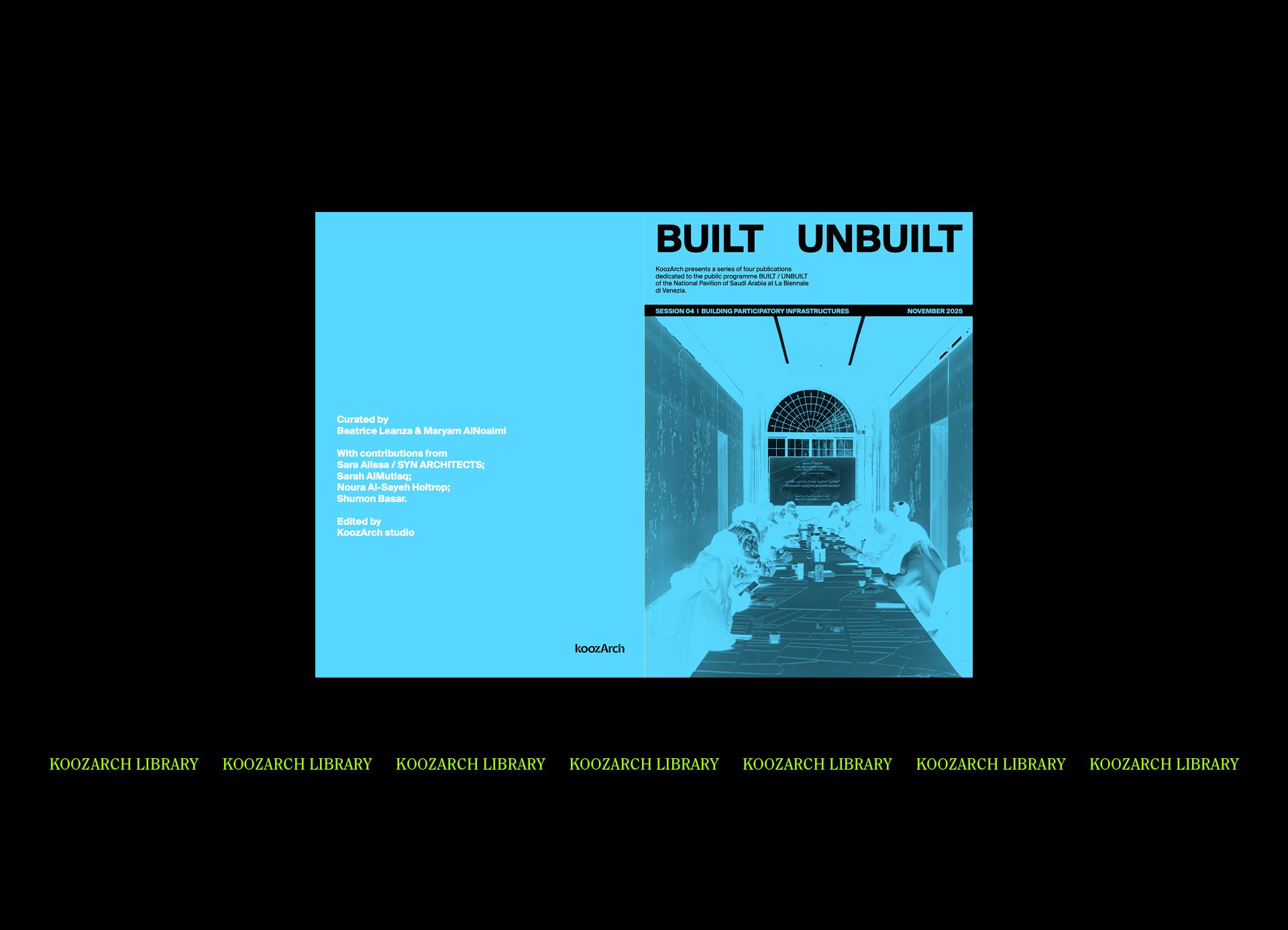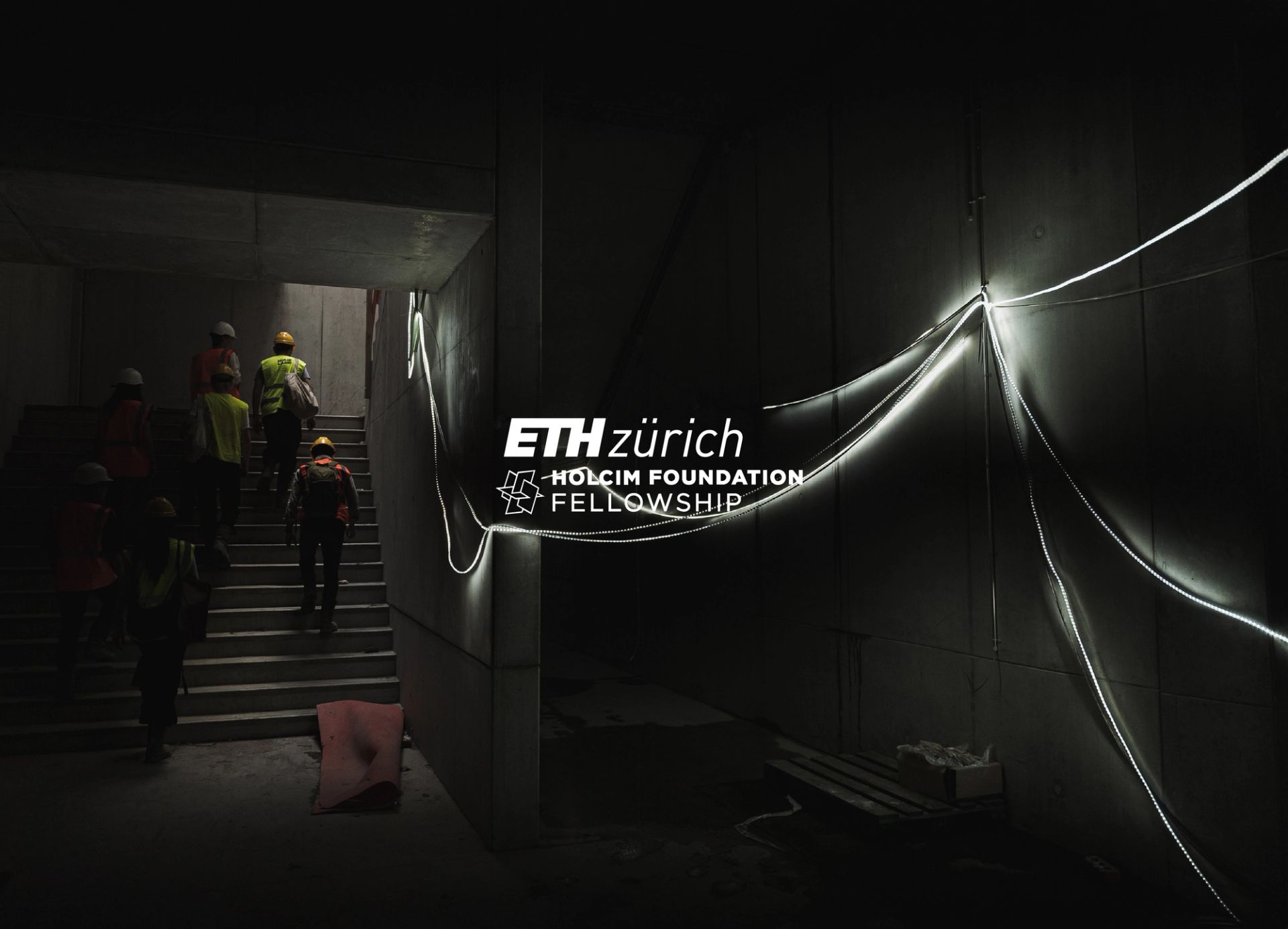Established in 2017, the third edition of the Tbilisi Architecture Biennial (TAB), titled "What's Next?", focuses on "temporality”, a very present architectural, economic, social and political condition of Georgia, and in particular the city of Tbilisi. Organised by Tinatin Gurgenidze in collaboration with Gigi Shukakidze and Otar Nemsadze, TAB “aims to bring together professionals from diverse disciplines united under one topic initiating and broadening the critical discourse on architectural and urban issues in Tbilisi and beyond.” In this conversation with Tinatin Gurgenidze we explore the notion of temporality as understood and challenged throughout the numerous installations of the Biennial and how the medium, in this case, is also the message.
KOOZ The third edition of the Tbilisi Architecture Biennial focuses on “temporality” within both urban and social life. What prompted this focus? How do you define and approach “temporality”?
TG All editions of the Biennial are ultimately connected to one another, and, in this specific case, we had already started speaking of temporality during the first edition of the festival back in 2018, when the focus was on informal architectures throughout Georgia and beyond. On this occasion, we focused on temporary structures and temporary living and working conditions realizing that this way of being and inhabiting is deeply entrenched within Georgian culture because of the country’s historical past and present as a post-socialist country. We, thus, thought it would be fitting to focus on temporality and explore its meaning and implications through a variety of different scales and approaches.
We focused on temporary structures and temporary living and working conditions realizing that this way of being and inhabiting is deeply entrenched within Georgian culture because of the country’s historical past and present as a post-socialist country.
KOOZ The Biennial both focuses on spaces that will soon disappear whilst analysing places that should have been temporary but have become permanent during their existence. Specifically, it unfolds according to three main research strands which include: “Permanent Temporality”, “Temporary Spaces Created Through Pandemic-related Restrictions”, “Peripheral Areas of the City” and “Areas of Ongoing Expansion”. What informed the delineation of these categories? How do these conditions reflect the social, economic and political history of Georgia?
TG “Permanent Temporality” directly refers to the overwhelming influx of internally displaced people (IDP) which occurred during the war in Abkhazia thirty years ago and the thousands of individuals who have, since then, been living in temporary living conditions across the country. They have been re-adapting former hotels, kindergartens and other public buildings without ever losing the hope of returning home one day. In terms of “Peripheral Areas of the City” and “Areas of Ongoing Expansion”,this area of research developed as a response to the rapid expansion that Tbilisi is undergoing and the appearance of self-made structures within its periphery, at the border where the rural and the urban meet. This last condition, coupled with similarly erected self-made, slum-like temporary structures within the centre of Tbilisi, appear to be the most precarious. This will soon disappear, igniting our ambition to research and record these specific states of being. Although we were also very interested in looking at spaces which had been transformed due to the pandemic, the outbreak of the ongoing war in Ukraine soon rendered this topic irrelevant and no one touched upon this during the open calls.
Although we were also very interested in looking at spaces which had been transformed due to the pandemic, the outbreak of the ongoing war in Ukraine soon rendered this topic irrelevant.
KOOZ When reading the statement of the Biennial, it becomes quite clear how the population of Georgia has been living in a temporary state for many years. How and in what ways has the current conflict in Ukraine shaped the meaning of temporary living?
TG Since their childhood, most Georgians have experienced many different wars, political instabilities and social problems, finding themselves living on this unstable ground and never too sure of what tomorrow would bring. Since the breakout of the war in Ukraine numerous Russian refugees have come to Tbilisi. This has created a series of complex social circumstances throughout the city as many inhabitants do fear having so many residents of a country who have occupied parts of their home. Compared to other conflicts this war has not had direct consequences on inhabitation modes as most of the individuals fleeing from Russia find themselves in a privileged situation, where they have not lost everything as the IDP did thirty years ago. If we look, instead, to the smaller number of Ukrainian refugees, these people have been initially housed in hotels but it is mostly unclear what solution is implemented for their accommodation at the moment.
KOOZ As an international endeavour, which gathers practitioners and thinkers from a wide variety of countries, are there any clear traits in how diverse groups and nationalities have interpreted and approached the notion of temporality?
TG Most of the participants to the Biennial applied through a system of open call and approached the theme through a multitude of diverse and unique perspectives. I believe that the most interesting and touching example is that of the partnership with two Ukrainian organizations; the Kyiv Pavilion of Culture and the MetaLab from western Ukraine, who are working at renovating existing abandoned buildings for IDP. We inaugurated the Biennial with a symposium and an exhibition in a former Sanatorium were the IDP have been living for over thirty years. When the Ukrainian group also moved there, it created a very interesting and emotional situation as they soon started questioning and comparing their situation to that of internally displaced people in Ukraine, along with the temporary structures that they are now inhabiting which might soon become “temporarily permanent” solutions as it previously occurred in Georgia following the conflict that happened thirty years ago.
Both the opening of the Biennial and a photo exhibition were hosted there to draw attention to the precarious “temporary” conditions which these people have experienced for the past three decades.
KOOZ As part of a Biennial, the exhibition itself exists as a temporary manifestation which unfolds within existing structures, such as the Sanatorium Kartli. At the same time, it aims to stimulate more permanent ideas and ambitions. How does the programme itself reflect on the notion of temporality?
TG The Biennial is deliberately structured throughout the city, from the centre to the edge, as we were keen on exploring different conditions and typologies inherent to Tbilisi and revealing these with the festival’s international audience. Specifically, if we take the Sanatorium Kartli as an example, this is a direct manifestation of the issue that we are tackling throughout the Biennale: It is a place which has hosted and have been the home to the IDP for thirty years. The government has now made the decision that the Sanatorium cannot be renovated and will need to be demolished leading to the relocation of the tenants who will be distributed to different parts of the city. Both the opening of the Biennial and a photo exhibition were hosted there, in collaboration with some of the residents who will be evicted by the end of the year, to draw attention to the precarious “temporary” conditions which these people have experienced for the past three decades. Socially, the eviction of these people also brings into question the loss of such an important community and network.
We do not believe that our job is to offer concrete solutions but rather we explore the potential of the festival as a platform where people can critically and collectively think.
KOOZ Since its first edition in 2018, the Tbilisi Biennial has evolved as a space of debate and research that is deeply rooted within the social, political and economic framework of the city of Tbilisi and Georgia. What informed this local approach? How and to what extent do the conversations initiated within the context of the Biennale seek to inform proper decisions and actions?
TG Since its first edition, our ambition for the Biennial has always been that of starting a critical discourse on the city of Tbilisi and its architecture. Rather than offering tangible solutions and talking about architecture in terms of aesthetics, we are concerned with addressing existing problems and conditions. Through our month-long programme we aim to influence young students and generations to rethink their profession and critically address specific topics. We do not believe that our job is to offer concrete solutions but rather we explore the potential of the festival as a platform where people can critically and collectively think. Since the festival occurs once every two years, and because of the intricate politics of Georgia, it is very hard for us to imagine that the Biennial can bring about tangible change at a governmental and policy making level. Although we do not rule this out in the future, it is simply not where we are now.
Bio
Tinatin Gurgenidze is an urban researcher, curator, and author. She lives and works between Tbilisi and Berlin. Tinatin is the author of several publications and projects dealing with urban topics in Tbilisi and other east European cities. Recently she has established an alternative researching and learning project Common Territories. Tinatin is also a co-founder and one of the artistic directors of the Tbilisi Architecture Biennial.
Federica Zambeletti is the founder and managing director of KoozArch. She is an architect, researcher and digital curator whose interests lie at the intersection between art, architecture and regenerative practices. In 2015 Federica founded KoozArch with the ambition of creating a space where to research, explore and discuss architecture beyond the limits of its built form. Parallel to her work at KoozArch, Federica is Architect at the architecture studio UNA and researcher at the non-profit agency for change UNLESS where she is project manager of the research "Antarctic Resolution". Federica is an Architectural Association School of Architecture in London alumni.





